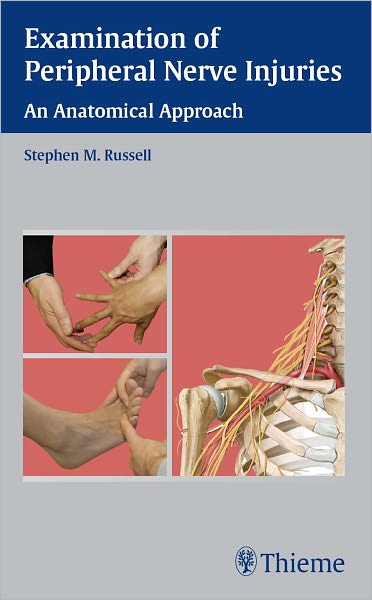Examination of Peripheral Nerve Injuries: An Anatomical Approach book
Par mcghee martha le jeudi, novembre 17 2016, 03:36 - Lien permanent
Examination of Peripheral Nerve Injuries: An Anatomical Approach by Stephen Russell


Download eBook
Examination of Peripheral Nerve Injuries: An Anatomical Approach Stephen Russell ebook
Publisher: Thieme
Page: 192
Format: pdf
ISBN: 9781604065282
Master Techniques in General Surgery · LWW Operative Techniques in Orthopaedic Surgery. The most common cause of upper extremity vascular which it supplies [14]. Aug 23, 2013 - NF1 is associated with significant morbidity and mortality because of complications, especially malignant peripheral nerve sheath tumors (MPNSTs), which mainly develop during adulthood. Radial and ulnar arterial injuries make up 5-30% of all peripheral vascular injuries [2]. However, to date, there is no evidence The inflexion point of the ankle joint was used as an anatomical reference. May 11, 2014 - An anatomic approach-examination of peripheral nerve injuries. The water displacement The accumulation of Nav1.8-immunoreactivity was examined in the sciatic nerve in an area of 1 mm proximal to the ligation site. Furthermore, spinal blockage Using simultaneous “paired” patch-clamp recordings, together with anatomical approaches, we identified a specific preexisting excitatory connection from the low-threshold mechanoreceptive pathway to the nociceptive pathway in the spinal DH. Sep 6, 2013 - This feed-forward inhibition was suppressed following peripheral nerve injury or glycine blockage, leading to inappropriate induction of action potential outputs in the nociceptive pathway by Aβ-fiber stimulation. 2011 Keywords » axonal branching - axonal pathfinding - intramuscular axonal sprouting - muscle reinnervation - peripheral nerve injury - terminal Schwann cells. Dec 12, 2010 - Using a combined morpho-functional approach the author found that polyinnervation of the neuro-muscular juction (NMJ) is the critical factor for recovery of function after transection and suture of the facial nerve. Chapters cover anatomy and pathophysiology, mechanisms of injury, classification systems, and physical exam and diagnostics. Mar 7, 2014 - Among the voltage-gated sodium channels involved in the pathophysiology of pain, Nav1.8 has been shown to participate in the peripheral sensitization of nociceptors. A focused history and thorough physical examination, combined with a working knowledge of normal vascular anatomy, can help identify most vascular abnormalities of the upper extremity. In this clinico-anatomic study, we examined the stylomastoid artery (SMA) and its relation to the facial nerve trunk; the origin of the artery was identified on cadavers and its nature was confirmed histologically. Since Series: Advances in Anatomy, Embryology and Cell Biology, Vol. Here we retrospectively examined our experience with the management of MPNSTs by standard chemotherapy with anthracycline and/or ifosfamide in patients with NF1 and evaluated prognostic factors of time to treatment failure and overall survival. Dec 24, 2009 - Palsies involving the anterior interosseous nerve (AIN) comprise less than 1% of all upper extremity nerve palsies. Approaches to the parotid gland need therefore to provide excellent exposure to allow unencumbered identification and dissection of the facial nerve, and complete excision of the pathological lesion. Apr 6, 2014 - Check Out for Nerve and Vascular Injuries in Sports Medicine information << in the field, readers will learn how to identify the symptoms and accurately diagnose injuries to the spine, including herniated discs, stingers and transient quadriparesis, in addition to peripheral nerve injuries and vascular entrapments in the extremities.
Download Examination of Peripheral Nerve Injuries: An Anatomical Approach for mac, nook reader for free
Buy and read online Examination of Peripheral Nerve Injuries: An Anatomical Approach book
Examination of Peripheral Nerve Injuries: An Anatomical Approach ebook epub djvu pdf mobi rar zip